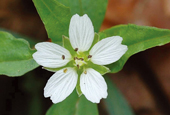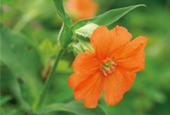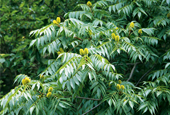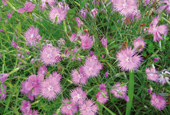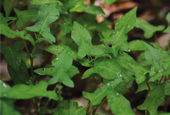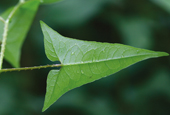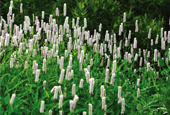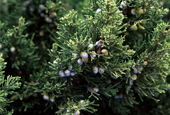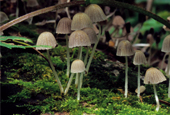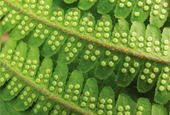View this article in another language
- 한국어
- English
- 日本語
- 中文
- العربية
- Español
- Français
- Deutsch
- Pусский
- Tiếng Việt
- Indonesian
Flora and Fauna of Korea #18
Korea.net publishes a series of articles, “Nature You Meet in the Mountains,” about the peninsula’s mushrooms, insects, trees and herbs & flowers.
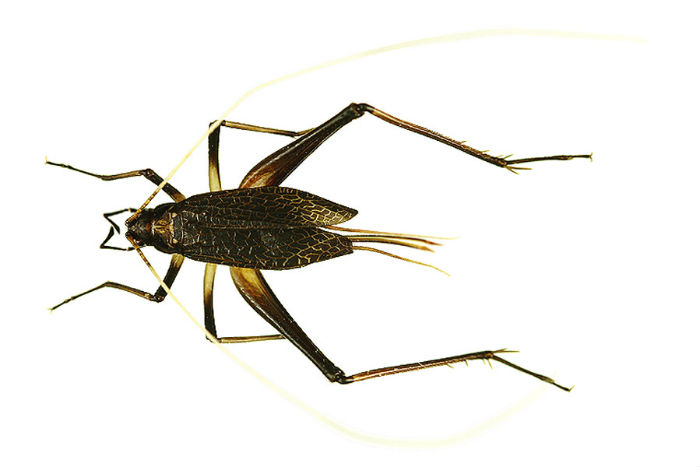
Insects
Name: 방울벌레, Bangul beolle, bell cricket
Scientific name: Homoeogryllus japonicus (de Haan)
Distribution: Korea, Japan, Taiwan
This bell cricket is about 16 to 18 millimeters long. It is dark brown or black-brown. The head is small with a slight bump on the top. The antenna are light yellowish brown and most of the middle part is white. The paranotal lobe is short, round and has some wrinkles in the center. The front wings stretch longer than the tip of the tail. The back is quite large and wide, especially on the males. It has a larger than usual stridulatory organ, the large vein under each wing which produces the chirping sound. The back of the females is a little slighter, the tip is sharper and has 5-6 longitudinal veins. The hind wings are shaped similarly to the tail, but they will be molted off later on. The ovipositor is long and slender with the tip facing down a bit.
Ecology: It normally lives in the ground. The bell cricket is known for the beautiful sound it makes. In the wild, it preys on other dead or rotten insects.
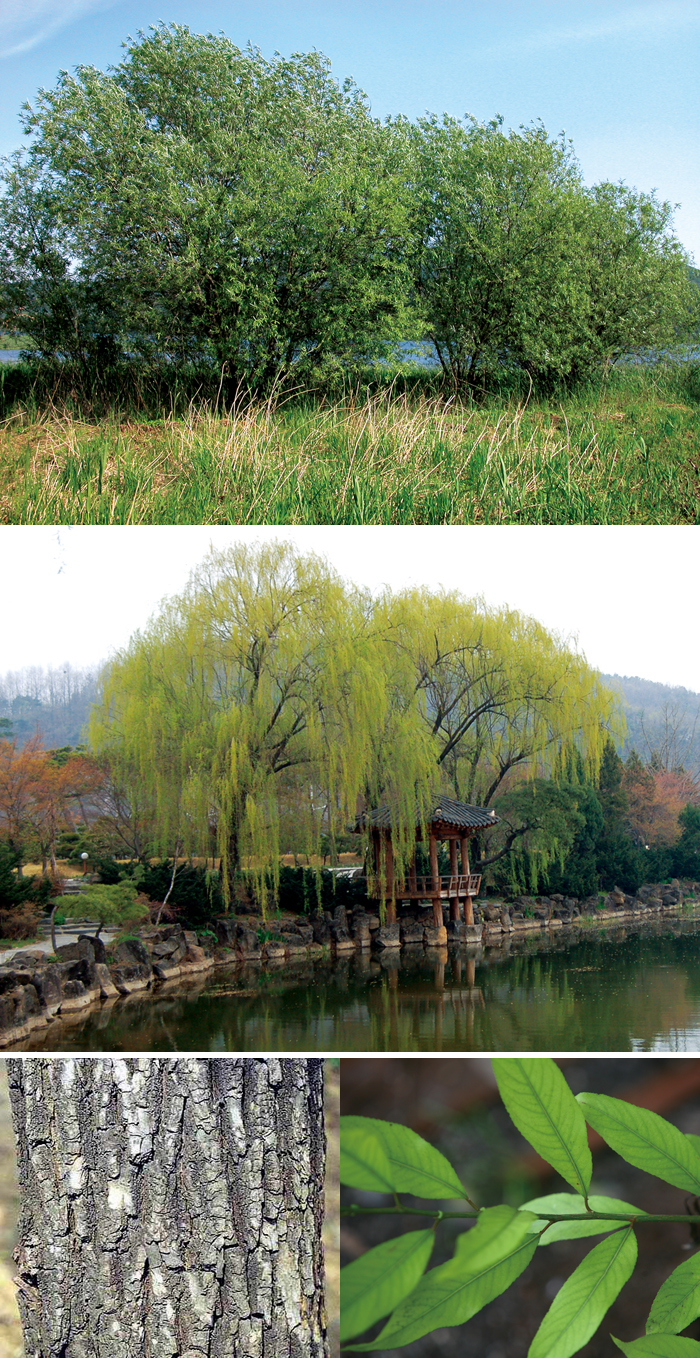
Trees
Name: 버드나무, willow
Scientific name: Salix koreensis Andersson
Type: deciduous broadleaf tall tree
Blooming season: March to April
Bearing season: May
Distribution: mountains nationwide
Willows are normally found at the foot of a mountain or by a brook or stream. They grow to a height of 20 meters and can be 80 centimeters around. The bark is dark brown. It cracks into thin pieces. The leaves are lanceolate, or a bit elongated. The shape gets increasingly sharper toward the tip. The underside is white with some hairs on the median vein. There is a serra around the edge of the leaves, the regular row of saw teeth slightly slanted inward. This dioecious tree gives bloom to a green female flower and bears a capsule fruit.
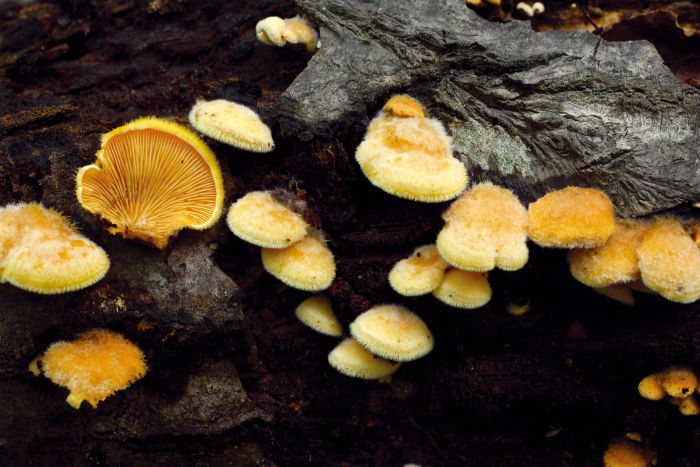
Mushrooms
Name: 노란귀느타리, Noran gwineutari, Yellow Ear Oyster Mushroom
Scientific name: Phyllotopsis nidulans (Pers.) Singer
Type: saprophile spore
Print: white
Inedible
This mushroom grows in clusters from the branches of dead or rotten conifers and broadleaved trees. It causes a white rot on the timber. The cap is around 1-8 centimeters in diameter. It grows without a stipe. It is semi-circular, similar to the shape of a kidney or a hand fan. The edges of the mushrooms are rolled toward the inside. The surface is golden yellow or lime yellow and is covered in dense hairs. The pleats are orange-yellow, densely arranged and soft, but a little tenacious. When dried, it becomes almost white.
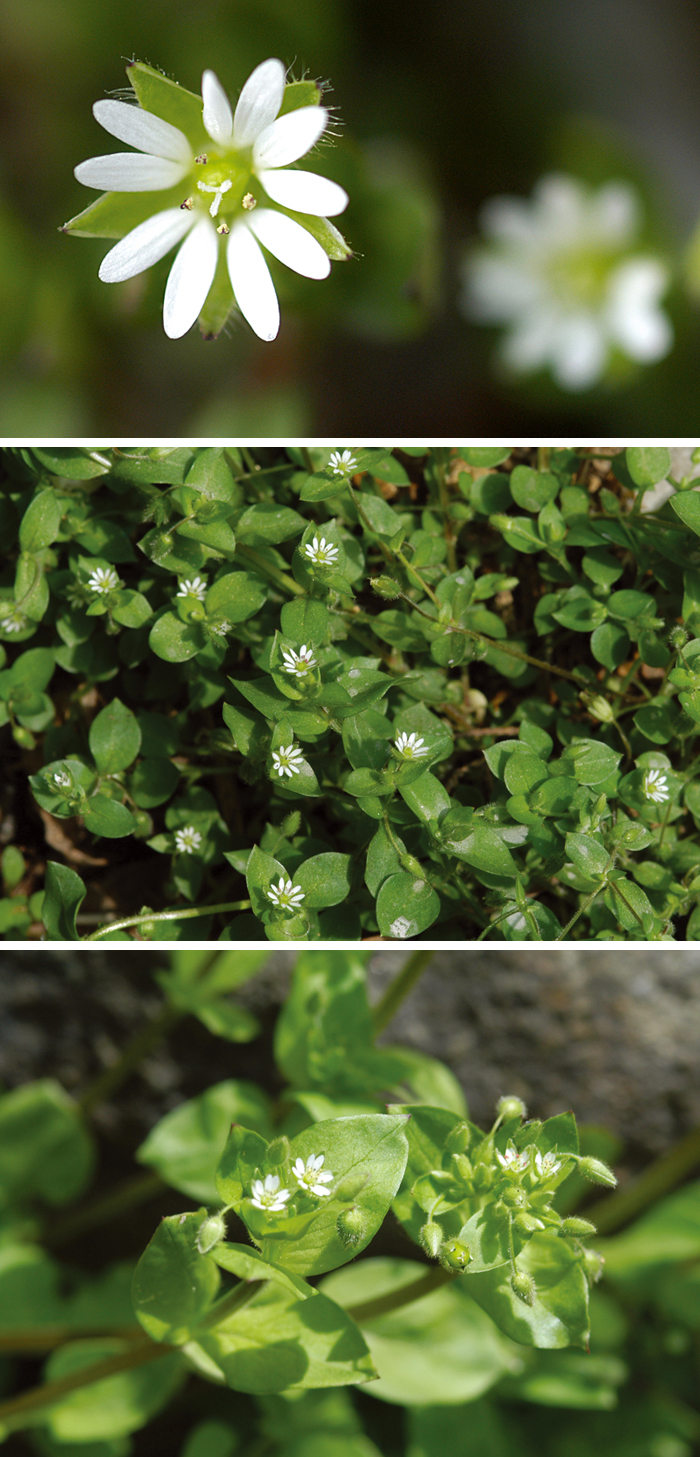
Herbs & Flowers
Name: 별꽃, byeolggot, star flower
Scientific name: Stellaria media (L.) Vill.
Blooming season: May to June
Full bloom: August to September
Distribution: mountains nationwide
This biennial chickweed is quite common, found in both streets and fields. It normally grows to a height of 10 to 20 centimeters. Plenty of branches grow from the stems with a thin line of hair.
The leaves grow opposite each other in an oval shape and both sides rarely have hairs. Flowers are androgynous, give bloom at the cyme and have little leaf-shaped alveola. The capsule fruit is a little longer than the sepal. The seed is flat, kidney-shaped and has saw teeth around the surface. Once in bloom, the flower droops and then faces upward when it bears fruits.
*This series of article about Korea’s insects, trees, mushrooms and herbs & flowers has been made possible through the cooperation of the Korea National Arboretum.
Korea.net publishes a series of articles, “Nature You Meet in the Mountains,” about the peninsula’s mushrooms, insects, trees and herbs & flowers.

Insects
Name: 방울벌레, Bangul beolle, bell cricket
Scientific name: Homoeogryllus japonicus (de Haan)
Distribution: Korea, Japan, Taiwan
This bell cricket is about 16 to 18 millimeters long. It is dark brown or black-brown. The head is small with a slight bump on the top. The antenna are light yellowish brown and most of the middle part is white. The paranotal lobe is short, round and has some wrinkles in the center. The front wings stretch longer than the tip of the tail. The back is quite large and wide, especially on the males. It has a larger than usual stridulatory organ, the large vein under each wing which produces the chirping sound. The back of the females is a little slighter, the tip is sharper and has 5-6 longitudinal veins. The hind wings are shaped similarly to the tail, but they will be molted off later on. The ovipositor is long and slender with the tip facing down a bit.
Ecology: It normally lives in the ground. The bell cricket is known for the beautiful sound it makes. In the wild, it preys on other dead or rotten insects.

Trees
Name: 버드나무, willow
Scientific name: Salix koreensis Andersson
Type: deciduous broadleaf tall tree
Blooming season: March to April
Bearing season: May
Distribution: mountains nationwide
Willows are normally found at the foot of a mountain or by a brook or stream. They grow to a height of 20 meters and can be 80 centimeters around. The bark is dark brown. It cracks into thin pieces. The leaves are lanceolate, or a bit elongated. The shape gets increasingly sharper toward the tip. The underside is white with some hairs on the median vein. There is a serra around the edge of the leaves, the regular row of saw teeth slightly slanted inward. This dioecious tree gives bloom to a green female flower and bears a capsule fruit.

Mushrooms
Name: 노란귀느타리, Noran gwineutari, Yellow Ear Oyster Mushroom
Scientific name: Phyllotopsis nidulans (Pers.) Singer
Type: saprophile spore
Print: white
Inedible
This mushroom grows in clusters from the branches of dead or rotten conifers and broadleaved trees. It causes a white rot on the timber. The cap is around 1-8 centimeters in diameter. It grows without a stipe. It is semi-circular, similar to the shape of a kidney or a hand fan. The edges of the mushrooms are rolled toward the inside. The surface is golden yellow or lime yellow and is covered in dense hairs. The pleats are orange-yellow, densely arranged and soft, but a little tenacious. When dried, it becomes almost white.

Herbs & Flowers
Name: 별꽃, byeolggot, star flower
Scientific name: Stellaria media (L.) Vill.
Blooming season: May to June
Full bloom: August to September
Distribution: mountains nationwide
This biennial chickweed is quite common, found in both streets and fields. It normally grows to a height of 10 to 20 centimeters. Plenty of branches grow from the stems with a thin line of hair.
The leaves grow opposite each other in an oval shape and both sides rarely have hairs. Flowers are androgynous, give bloom at the cyme and have little leaf-shaped alveola. The capsule fruit is a little longer than the sepal. The seed is flat, kidney-shaped and has saw teeth around the surface. Once in bloom, the flower droops and then faces upward when it bears fruits.
*This series of article about Korea’s insects, trees, mushrooms and herbs & flowers has been made possible through the cooperation of the Korea National Arboretum.
